Driving Discovery
Record-setting research funding fuels Emory’s impact around the world
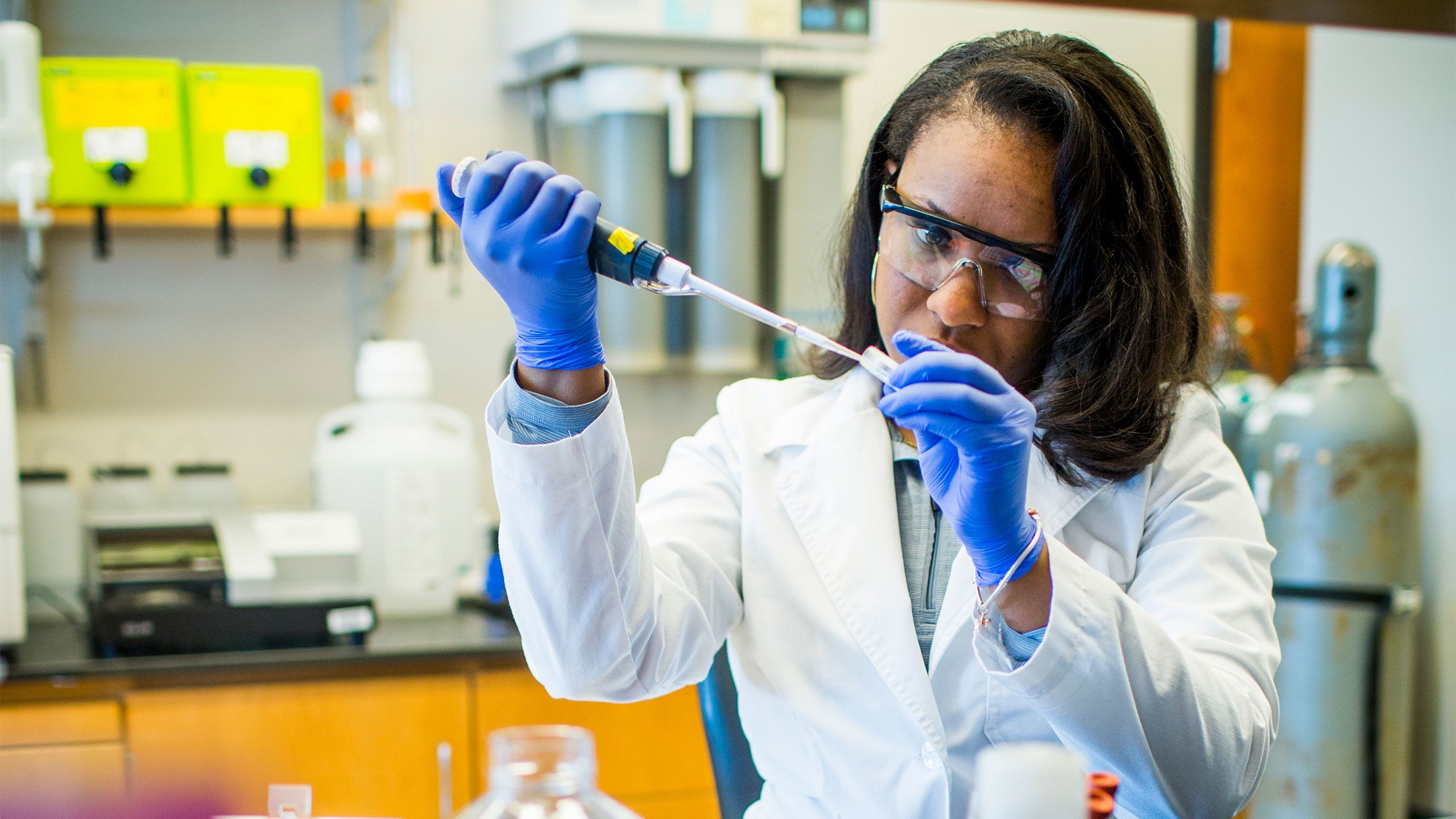
Understanding and preventing the deaths of young children in developing countries. Uniting Georgia scientists to translate research results into better outcomes for patients. Creating new ways to do chemistry that could lead to breakthroughs in fields from agriculture to electronics.
Emory received $734 million in external research funding in fiscal year 2018, the most ever for the university, and these are just three of the projects this record-setting funding supports.
“At Emory, striving for excellence means staying engaged with the challenges facing our world,” says Emory President Claire E. Sterk. “It means bringing together the most brilliant and creative minds to collaborate in ways that only we can, serving as an incubator for research and a driver for compassionate innovation.”
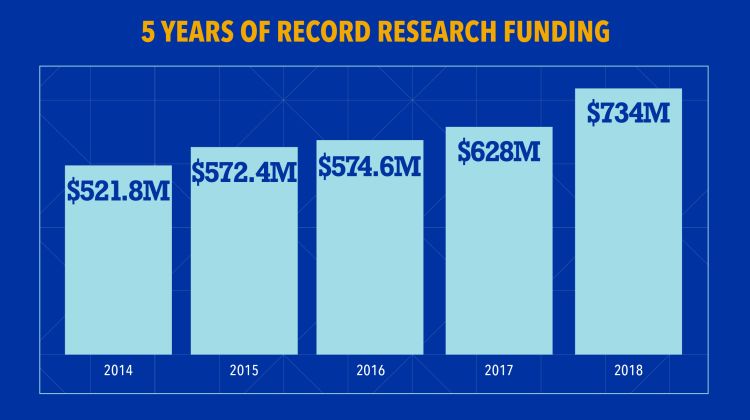
Emory has set new records for external research funding for each of the last five years.
Emory has set new records for external research funding for each of the last five years.
Emory’s external research funding for this year represents a 17 percent increase from $628 million in fiscal year 2017. Over the past 10 years, external research funding at Emory has increased nearly 52 percent.
“This significant increase in Emory’s research funding, following a rising trajectory over the past decade, reflects the dedication and expertise of our outstanding faculty,” says Deborah W. Bruner, Emory’s new senior vice president for research.
“Emory University is increasingly recognized as one of the nation’s leading research institutions due to advances by our scientists fueled by a passion for discovery and collaboration.”
University research benefits society through discoveries that improve and save lives and also serves as a catalyst for economic growth that far surpasses the initial investment.
Funded research helps Emory and Georgia attract a highly skilled workforce and top professors and students, create jobs, increase the number of clinical trials, and advance start-up projects that attract additional funding from private, government and industry sources.
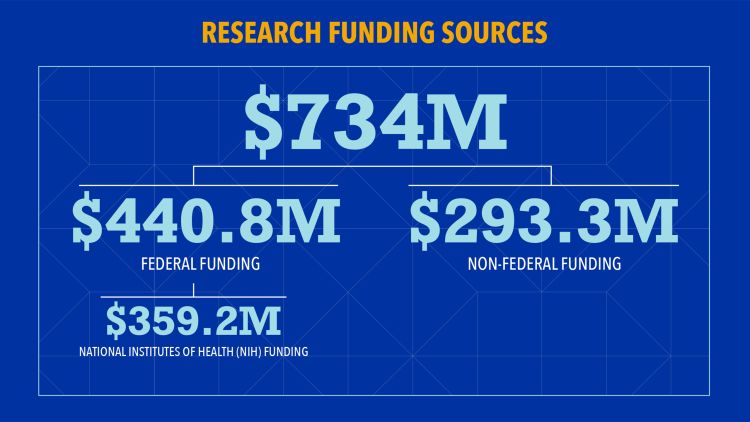
More than half of Emory's external research funding comes from federal agencies.
More than half of Emory's external research funding comes from federal agencies.
For fiscal year 2018, federal agencies awarded $440.8 million, or more than 60 percent of Emory’s total, led by the National Institutes of Health (NIH) with $359.2 million in awards. NIH funding represented nearly 82 percent of total federal dollars awarded to Emory.
According to the NIH, each $1 million in funding from the NIH translates to 16.64 jobs, meaning NIH research funding at Emory can be attributed to nearly 6,000 jobs in Georgia.
Research funding also propels Emory in its efforts to mobilize global change, including unlocking Emory and Atlanta’s shared potential as an engine for inclusive growth and serving Atlanta and global communities through Emory’s strengths as a top-tier research institution in partnership with dynamic and innovative Atlanta institutions.
Researchers in Emory’s Woodruff Health Sciences Center (WHSC) received more than $685.8 million in FY18, with $402.5 million in federal funding, including $345.4 million from the NIH. The WHSC includes schools of medicine, public health, nursing, Yerkes National Primate Research Center, Winship Cancer Institute, the Executive Vice President for Health Affairs Office, and Emory Healthcare.
“I commend our faculty and our research leaders for this tremendous accomplishment,” says Jonathan S. Lewin, Emory vice president for health affairs and executive director of the Woodruff Health Sciences Center.
“This result reflects a long-term, sustained effort to create meaningful positive impact on health and wellness through our faculty’s groundbreaking discoveries, improving the lives of patients here in Atlanta, across the nation, and around the world.”
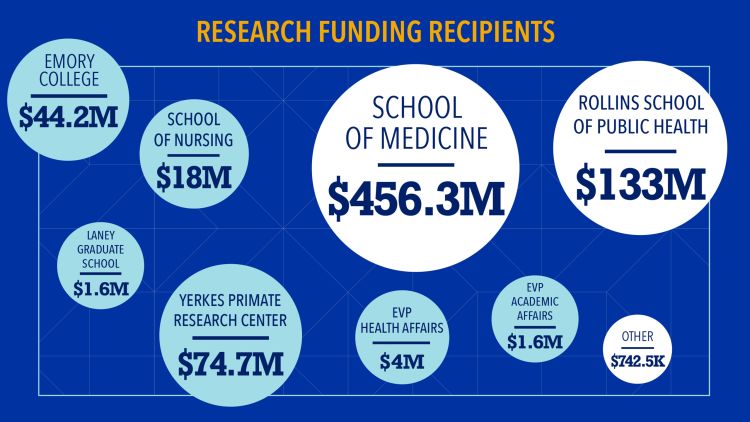
Research funding supports innovation across Emory's schools and divisions.
Research funding supports innovation across Emory's schools and divisions.
CASE STUDY » GLOBAL IMPACT
Understanding and preventing childhood mortality
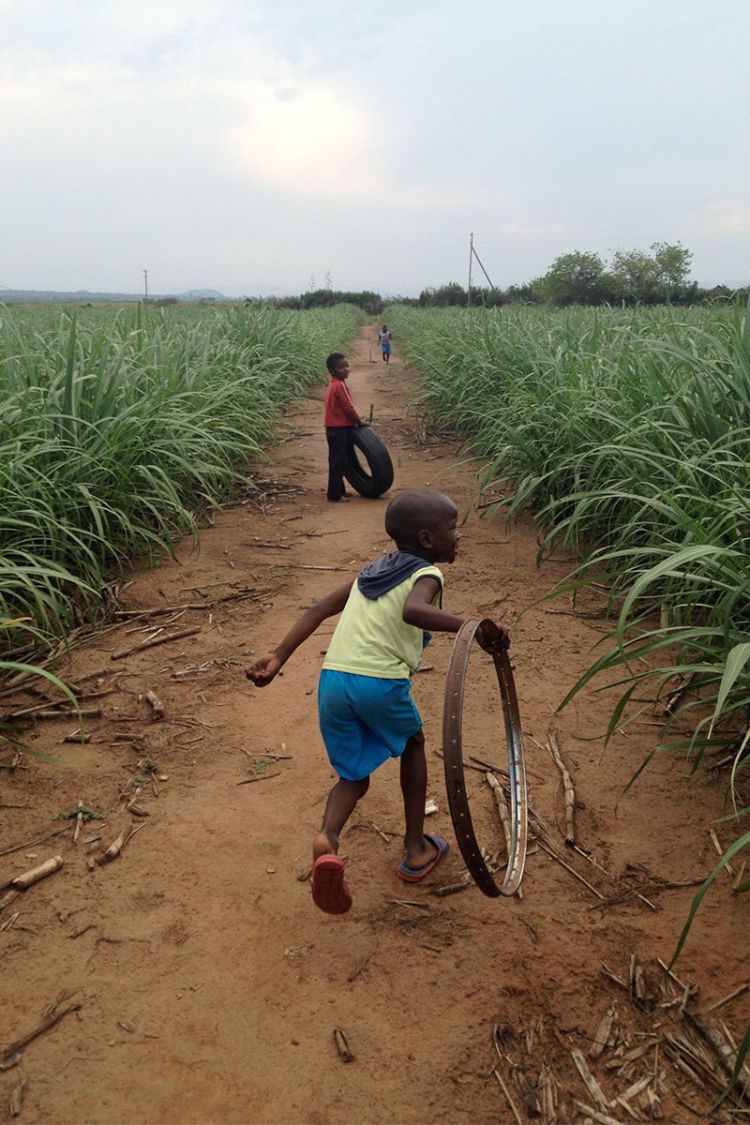
Why do so many young children die in South Asia and Sub-Saharan Africa, and what can be done to help them survive?
For the first time, the Child Health and Mortality Prevention Surveillance Network (CHAMPS) is making available cause-of-death data from children under the age of five in these regions, where infant and childhood mortality are exceptionally high.
Since 2015, CHAMPS, with the Emory Global Health Institute as lead partner, has been focused on preventing childhood mortality in developing countries with support from the Bill & Melinda Gates Foundation. CHAMPS data provide more accurate and precise information on infant and child deaths than is typically available.
Through $75 million of initial three-year Gates Foundation funding, CHAMPS has partnered with governments and national public health institutes on a long-term approach to information management, laboratory infrastructure and workforce capacity. CHAMPS recently was granted an additional $25 million by the Gates Foundation.
“Right now, we know the parts of the world where most of the 15,000 daily deaths in infants and young children occur,” says Robert Breiman, CHAMPS executive director and director of the Emory Global Health Institute.
“However, we often know very little about the specific causes of individual child deaths because we have scant and imprecise information," he explains. "In the CHAMPS network, much more information is obtained on individual child deaths, and we are providing this to experts who use it to more precisely determine why a child died.”
In the past three years CHAMPS has established sites in seven countries – Bangladesh, Ethiopia, Kenya, Mali, Mozambique, South Africa and Sierra Leone – all places with high child mortality and relatively little information about the specific causes of infant and young child deaths.
The initial CHAMPS data release will give researchers an opportunity to learn more about the information gathered at CHAMPS sites and encourage them to begin using it.
As the CHAMPS network gathers more cause-of-death data and makes it available, researchers and child health programs will be able to help improve child health by:
- Gaining knowledge and insights into more of the factors causing or contributing to deaths among infants and young children in the CHAMPS-site regions
- Identifying relationships between different causes of deaths
- Targeting interventions and actions to prevent or reduce deaths in children under five in the CHAMPS sites and regions.
View the data
"Research conducted at America’s research universities carries a dual benefit. It creates the foundation for major advances in such areas as health and medicine, communications, food, economics, energy and national security. And it helps educate students to be scientific leaders and innovators."
CASE STUDY » POWER IN PARTNERSHIP
Sharing research to save lives statewide

How can Georgia's talented community of scientists come together to improve lives across the state?
After a decade of collaboration among Atlanta partners Emory, Morehouse School of Medicine and Georgia Tech, this year the Atlanta Clinical & Translational Science Institute (ACTSI) expanded to include the University of Georgia and acquired a new name: the Georgia Clinical & Translational Science Alliance (Georgia CTSA).
In the process, the Emory-led alliance received a new five-year, $51 million CTSA award from the National Institutes of Health. The Georgia CTSA is part of a national network of more than 50 academic medical centers across the country working to ensure innovative and effective treatments are available to more patients by improving the translational research process.
The new research award funds programs at the partner institutions focused on improving quality, efficiency and collaboration in the research process, providing consultative support and new tools in bioinformatics and biostatistics, pilot funding for new research projects, and expanding training and workforce development.
The alliance also is working to integrate special populations and to create local clinical research centers tackling clinical trial inefficiencies.
“The Georgia CTSA is an inter-institutional magnet that concentrates the strengths and efforts of our four academic partners,” says W. Robert Taylor, principal investigator at Emory and director of the Division of Cardiology in Emory School of Medicine.
“By including investigators in the fundamental sciences, health care providers, professional societies, and industry collaborators in our work, we can significantly improve the availability of clinical trials and access to those trials for patients throughout Georgia," Taylor notes. "This translation of discovery to treatment will improve and save lives statewide.”
Annually the Georgia CTSA brings together researchers from across the state to present the best new clinical and translational research and build collaborative partnerships. The next Georgia Clinical & Translational Science Conference will be held Feb. 28 to March 1 at Callaway Resort and Gardens.
Watch a short video about the alliance.
"Research universities are unique in our nation’s system of higher education. Faculty at these institutions are engaged in a wide array of research and scholarship activities that inform and broaden knowledge in and across academic disciplines."
CASE STUDY » SYNTHESIZING SCIENCE
A revolutionary approach to chemistry
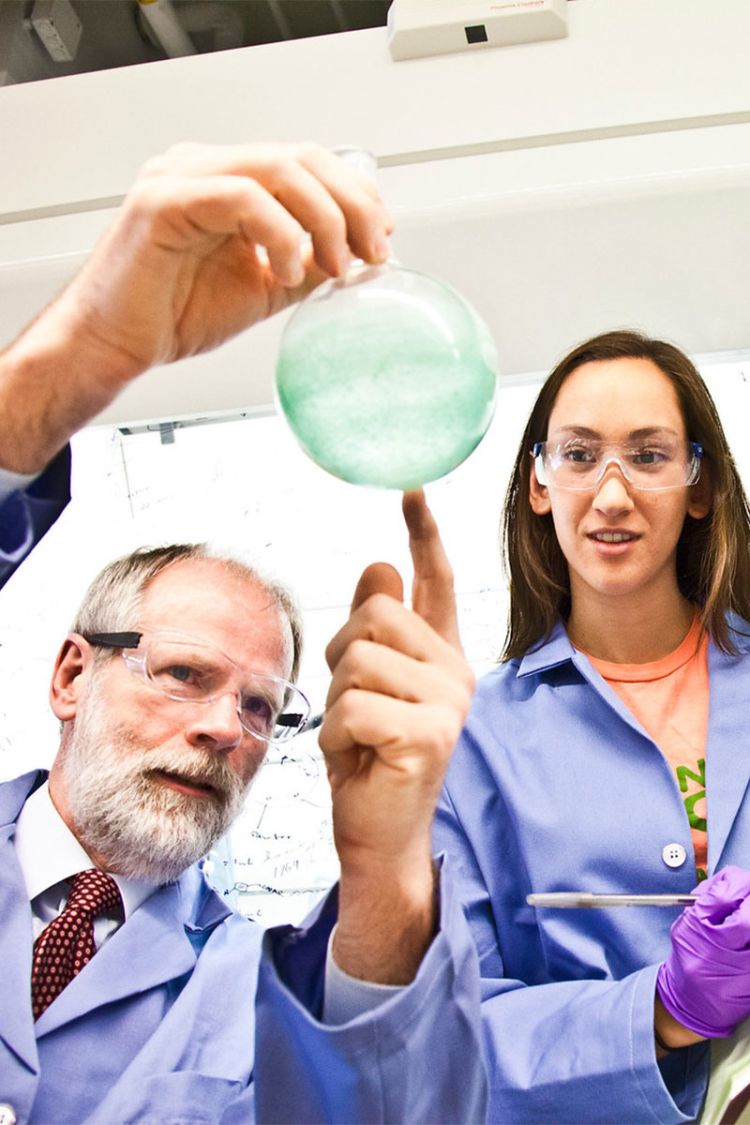
What breakthroughs would be possible if, instead of competing for discoveries, researchers around the world combined their knowledge?
The National Science Foundation awarded another $20 million to Emory University’s Center for Selective C-H Functionalization, to fund the next phase of a global effort to revolutionize the field of organic synthesis.
“Our center is at the forefront of a major shift in the way that we do chemistry,” says Huw Davies, professor of chemistry at Emory and the director of the Center for Selective C-H Functionalization (CCHF). “This shift holds great promise for creating new pathways for drug discovery and the production of new materials to benefit everything from agriculture to electronics.”
Traditionally, organic chemistry has focused on the division between reactive, or functional, molecular bonds and the inert, or non-functional bonds carbon-carbon (C-C) and carbon-hydrogen (C-H). The inert bonds provide a strong, stable scaffold for performing chemical synthesis on the reactive groups. C-H functionalization flips this model on its head.
“We are designing tools to make the scaffolding functional,” Davies says. “We ignore the reactive groups and do synthesis at the inert C-H sites. We can now get reactions to occur at these sites.”
The CCHF began as an NSF Center for Chemical Innovation in 2009, with a seed grant of $1.5 million and four collaborating universities. In 2012, the NSF awarded the CCHF its first $20 million, enabling it to grow to encompass 16 U.S. institutions and seven industrial affiliates, including six major pharmaceutical companies and one of the largest U.S. chemical suppliers. The center also built global connections with major players in C-H functionalization in Japan, South Korea and the U.K.
The CCHF has led the way for explosive growth in the field of C-H functionalization, publishing more than 200 papers on the topic through its collaborators. It has developed dozens of new catalysts for C-H functionalization, including four major classes from the Huw Davies group.
The CCHF is not only transforming organic synthesis — it’s also creating new models for the way that organic chemistry is taught and that labs conduct research.
Where previously individual labs tended to work in isolation to tackle problems, the CCHF has broken down walls across specialties, institutions and even countries to collectively take on the remaining challenges of selective C-H functionalization.
A key part of the center’s mission is to prepare students for a new era of collaborative chemistry on a global scale. The NSF Science Across Virtual Institutes (SAVI) program this year awarded another $300,000 to the CCHF to continue its student exchange program, including labs in the United States, South Korea, Japan and Germany.
Undergraduates, graduate students, and post-doctoral fellows can participate in national and international exchanges, learning the techniques of other labs while bringing in new ideas of their own.
“We’ve got this incredible collaborative environment where organic chemists aren’t just sharing results — they’re sharing ideas,” Davies says. “That’s rare. And we’ve expanded that environment beyond our network of universities to also engage the pharmaceutical industry.”


